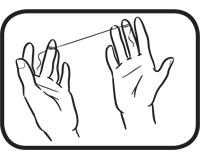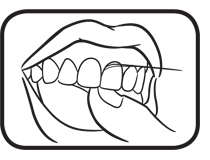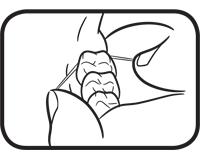by DeMario Easley
Many Americans brush their teeth twice a day, but only a few of them are flossing daily. Some dentists even suggest that flossing is more important than actually flossing. Although brushing is what keeps the surface of your teeth clean, flossing is what removes bacteria that can build up in the gaps of your teeth and gums. Floss can hit spots your toothbrush will miss. Flossing can also make your teeth look cleaner, whiter, and smoother while also improving the smell of your breath. About half of adults over the age of 30 are suffering from halitosis and don’t know it! If this goes untreated, this can eventually result in loose teeth or tooth loss and that may not even be the biggest problem!
According to the American Dental Association, flossing at least once a day can make a huge difference in our dental hygiene. This can protect you from gum disease, tooth decay, plaque buildup, and cavities! In the long run, flossing can help you avoid some expensive dental procedures.
The American Heart Association states that people with gum disease are at a slightly higher risk for heart disease, heart attacks, and strokes.
Dental hygiene can even be directly related to your life expectancy, giving you five more years of life.
Not flossing can also complicate other diseases like Periodontal disease, which can cause diabetes, heart disease, respiratory disease, pregnancy complications, and even cancer. Periodontal disease and diabetes can be difficult to deal with in general. Having both at the same time causes each condition to worsen. Serious periodontal disease can cause blood sugar to rise, which makes diabetes more difficult to control. Having high blood sugar weakens the immune system making it harder for your body to fight off infections in the mouth.
Although all of these facts are highly important, there’s way more to heart health than that! If you are concerned about your heart health, it’s important to eat healthily, exercise, manage stress, and make sure you are getting enough sleep.
Taking care of our bodies is a complete group effort coming from all parts of the body! This means from top to bottom you have to make sure you’re doing the right things. Just don’t forget to add flossing and brushing into the mix!
How To Properly Floss
According to MouthHealthy.org, in order to properly floss you should break off about 18 inches of string and wind most of it around one of your middle fingers. Wind the remaining floss around the same finger of the opposite hand. This finger will take up the floss as it becomes dirty. (Seen Below)

Hold the floss tightly between your thumbs and forefingers. (Seen Below)

Guide the floss between your teeth using a gentle rubbing motion. Never snap the floss into the gums. (Seen Below)

When the floss reaches the gum line, curve it into a C shape against one tooth. Gently slide it into the space between the gum and the tooth. (Seen Below)

Hold the floss tightly against the tooth. Gently rub the side of the tooth, moving the floss away from the gum with up and down motions. Repeat this method on the rest of your teeth. Don’t forget the back side of your last tooth. (Seen Below)

The next time you want to skip on flossing, just remember the possible complications it could bring you in the future. It starts off with missing one day, then a few days, then even more. Think of it as a slippery slope that ends in expensive issues.












